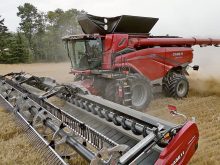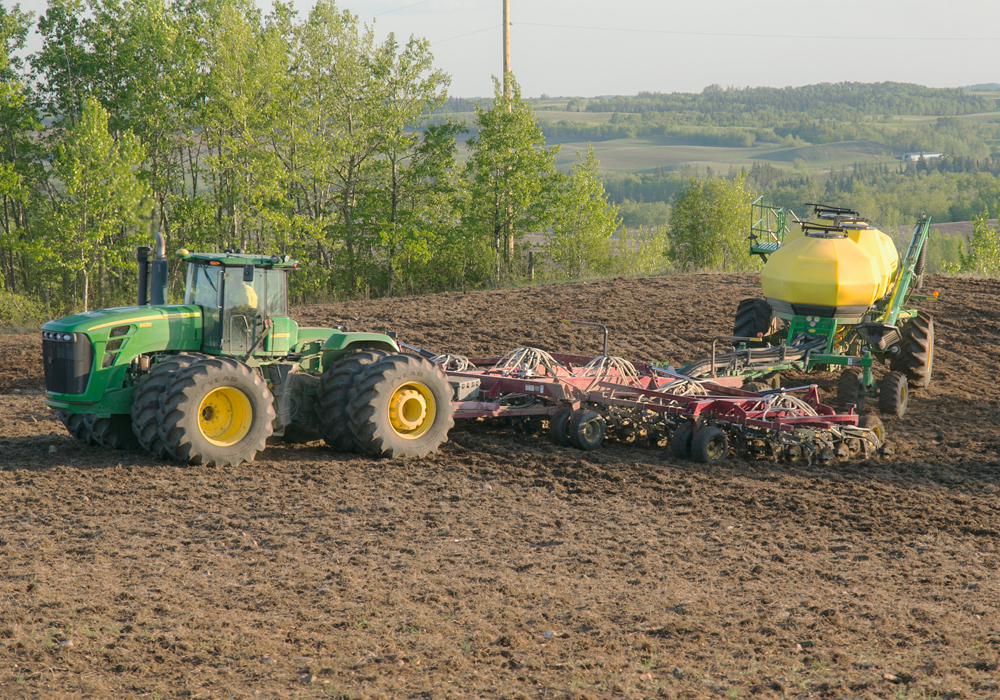Safe storage of canola will likely be a concern for prairie oilseed producers this year, said the senior agronomist with the Canola Council of Canada.
John Mayko said a significant portion of Western Canada’s canola crop could be downgraded due to high green seed counts, with many farmers harvesting a late-maturing crop in various stages of development.
The harvested crop could have a lot of green material that is prone to heating and spoilage.
“The higher the levels of green seed or chlorophyll in a crop, the more unstable that crop is for storage,” Mayko said.
Read Also

Internet of Things tapped for better emissions insights
Interconnected field sensor fleet allows better soil monitoring coverage and, hopefully, live insights on farm greenhouse gas emissions and nitrogen fertilizer application for farms.
“The advice we would have is make sure that crop is dry, definitely below 8.5 percent if at all possible, and make sure that you put it in a bin that has at minimum the ability for you to monitor the temperature and, even more preferably, a bin that has both temperature monitoring capability and aeration … so you can run air through it.”
In many regions of Saskatchewan and Alberta, poor soil moisture and cool spring temperatures led to late and uneven emergence.
That was followed by frequent frosts and late rains that caused a second flush of plants to emerge late in the growing season.
In Manitoba, excess moisture hampered emergence and plant development.
Mayko said timing of swathing will be critical this year.
A long fall without early frosts would alleviate many quality concerns, he added.
“Because most crops have variable staging, obviously we’re going to have crop that’s going to be immature at the time it’s cut and depending on what weather conditions are like at that time, it could increase our chances for green seed,” Mayko said.
“If we have normal weather patterns (between now and harvest), I think it’s pretty safe to say that we’re going to have more lower grades than we have in a normal year.”
Farmers with late maturing canola can minimize green seed by swathing at least three days before a killing frost.
If immature canola seeds have a moisture content below 20 percent, the impact of frost is minimized and high chlorophyll levels can be avoided.
According to Saskatchewan Agriculture, canola that is downgraded due to green seed normally drops in price by $10 to $15 per tonne per grade.
Sample grade canola, which has more than 20 percent green seed in a 500 seed sample, is often discounted by 50 percent compared to No. 1 canola.
Marketing off-grade canola can be a challenge, particularly if there are large quantities harvested. In recent years, the number of companies that buy off-grade and sample canola has increased.
In Saskatchewan, Oleet Processing, a Regina-based feed manufacturing company, and Milligan Biotech, a biodiesel company and feedmaker based in Foam Lake, Sask., are two of the largest buyers.
Sheila McLean, marketing co-ordinator with Milligan Biotech, said between five and 15 percent of the average canola crop ends up being off grade.
With the recent expansion of the company’s biodiesel production facility, Milligan will have the capacity to crush 30,000 tonnes of non-food grade canola once it reaches full production.
The company buys canola based on oil content rather than grade.















